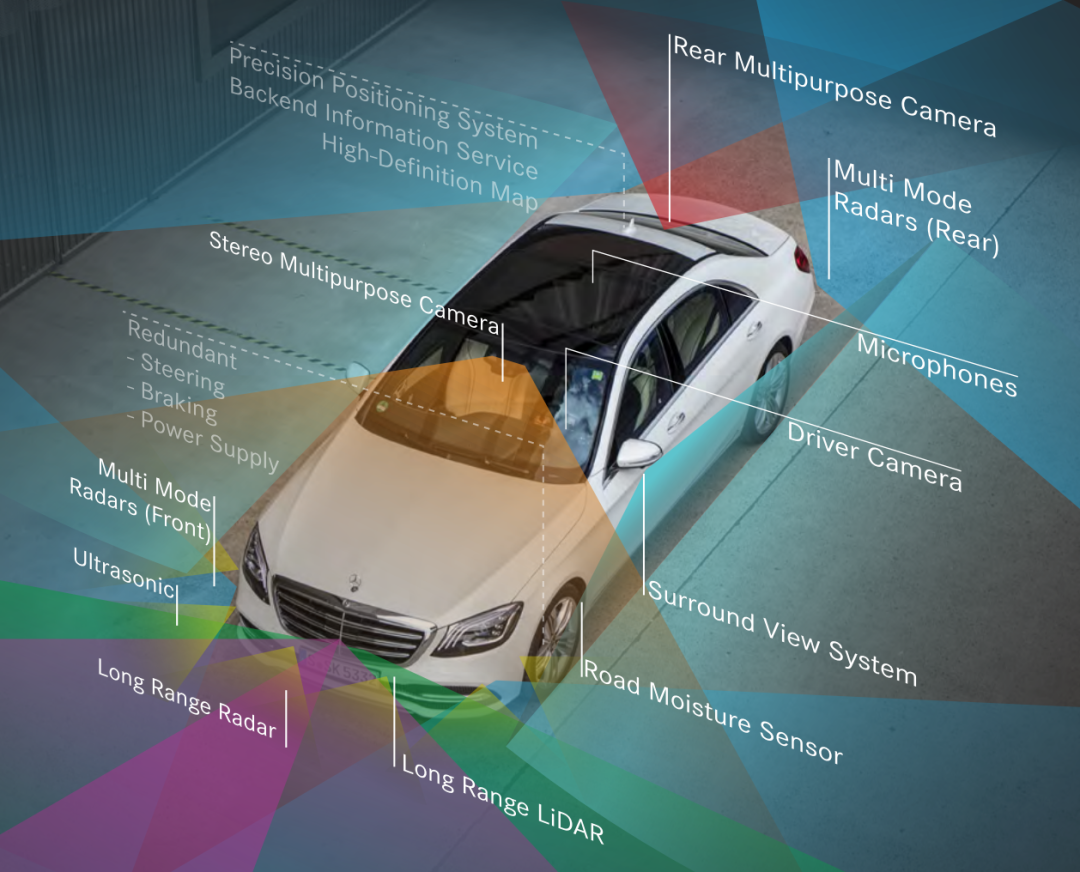*Author: Chris Zheng
Mercedes-Benz, one of the world’s most powerful luxury car brands, is building anticipation for its flagship smart electric EQS sedan.
In the past week, Mercedes has revealed the EQS’s maximum 108kWh battery spec, a European WLTP test cycle range of 700+ kilometers, and a new generation Hyperscreen curved integrated screen MBUX cockpit design.
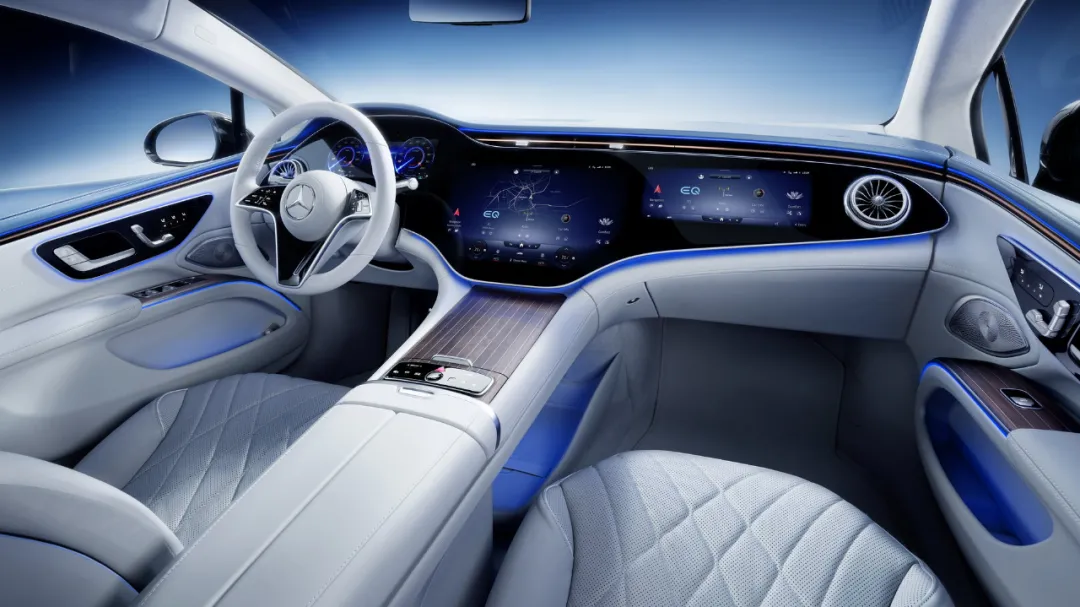
Meanwhile, on January 9, 2021, NIO also unveiled its first intelligent electric sedan, the ET7, in Chengdu, China. Its cockpit design is shown below.
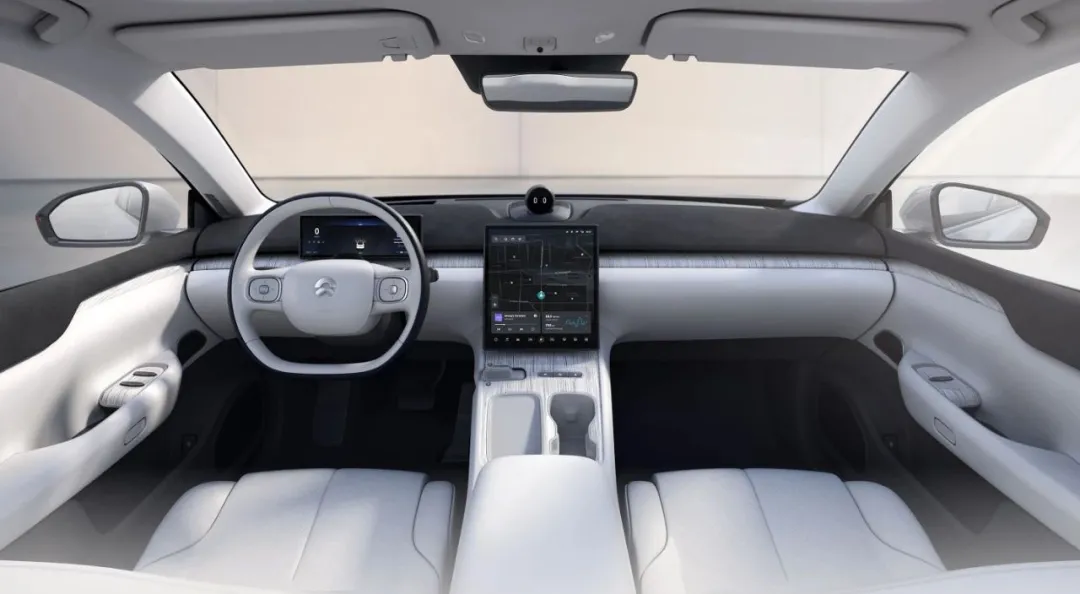
Even if you are not a professional designer, you can clearly see that Kris Tomasson, the Vice President of Design at NIO, and Gorden Wagener, the Chief Designer at Mercedes, have different concepts for the next generation of smart car cabins.
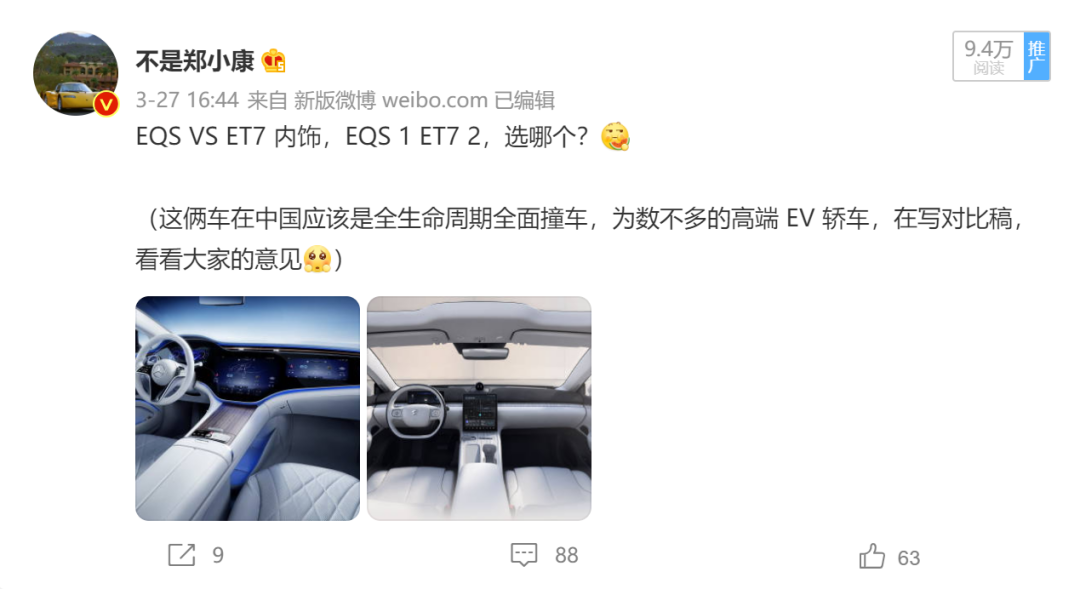
I started a discussion on Weibo, and feedback from the comments section shows that this time, the classic luxury style of the EQS did not receive unanimous praise. Conversely, NIO’s simple and elegant mobile living space style won many fans.
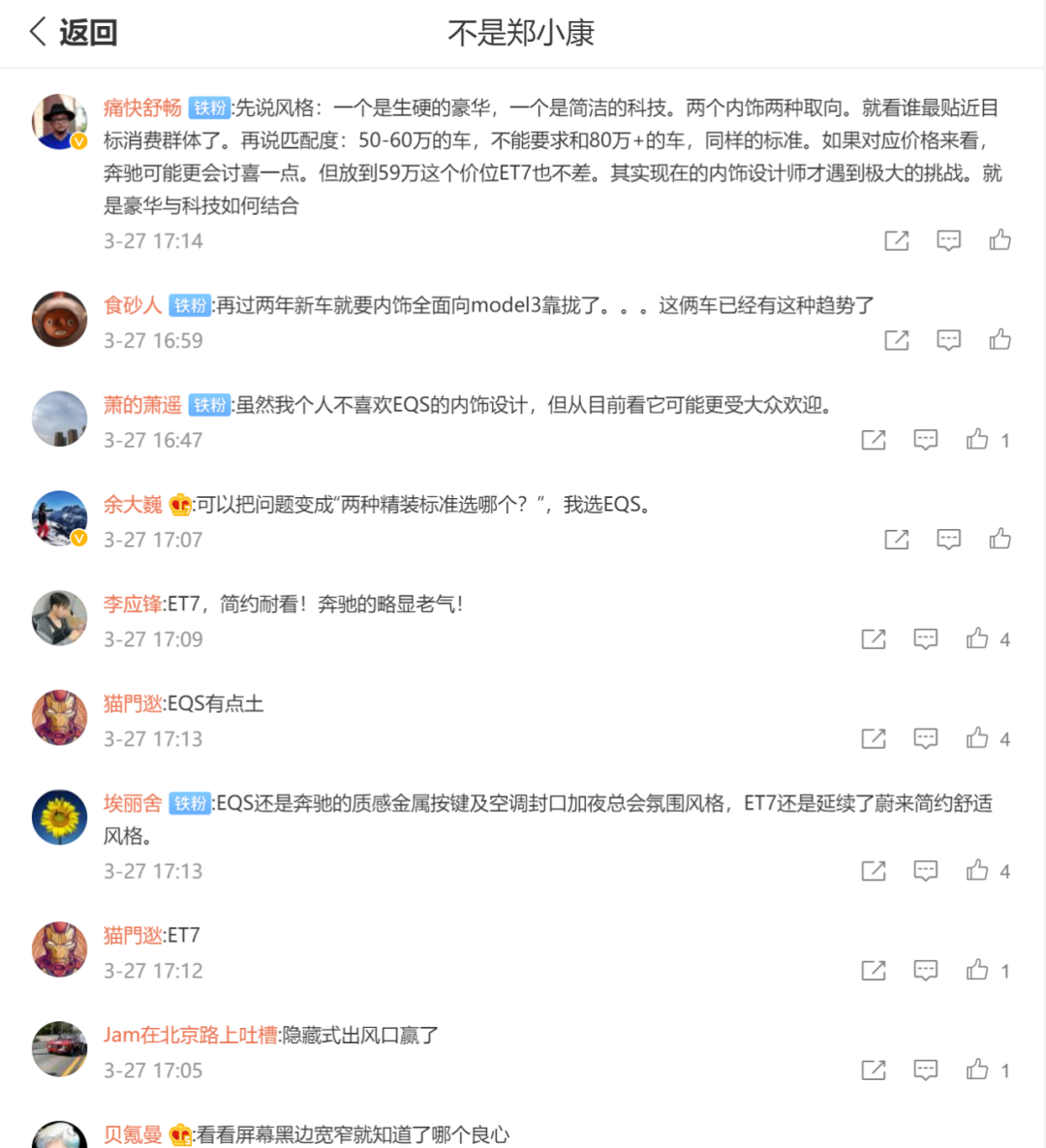
Today, we’ll talk about the EQS and ET7.
Why ET7 and EQS?
Setting design aside, the EQS and ET7 are both products that have arrived at the right time in many respects.
Starting with Mercedes-Benz, EQS belongs to Mercedes’ “Progressive Luxury” brand EQ, with “S” defining its position in Mercedes’ pure electric product line.
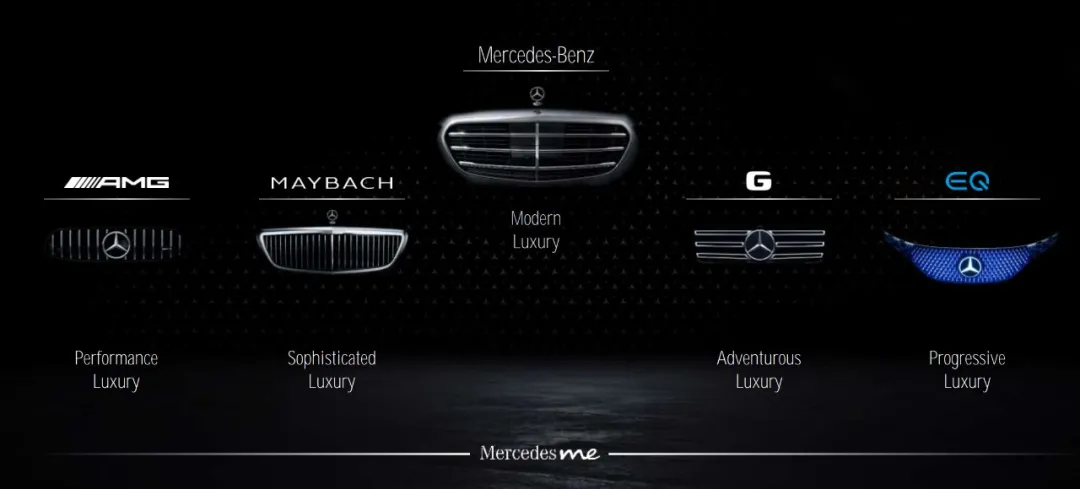
ET7’s position in the NIO product line is similar. ET7 is the first model under the NT 2.0 (NIO Technology) system and is also NIO’s flagship sedan. NIO’s January 9th NAD, which shocked the industry, is also under the NT 2.0 system.
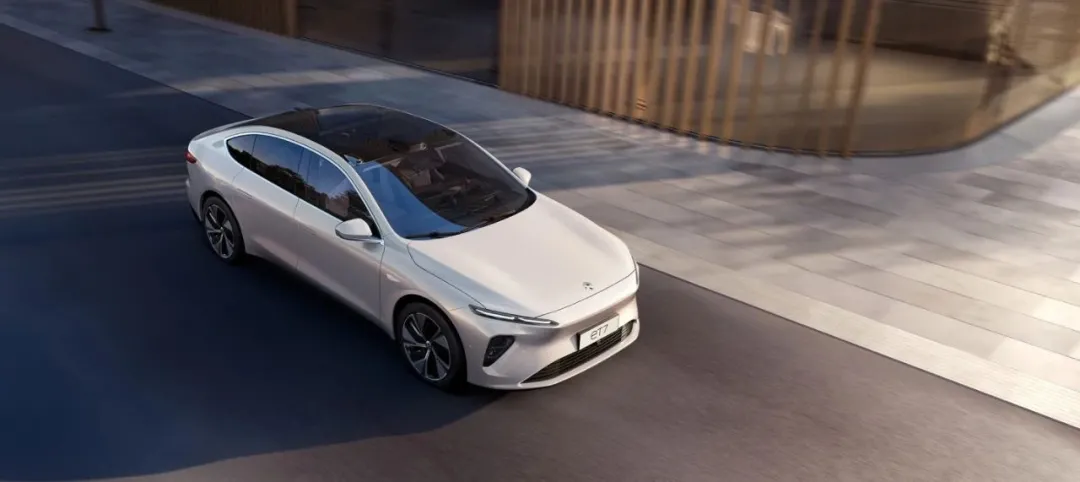
Next is the issue of product release timing.
According to internal documents leaked online, EQS will be launched in April 2021, and deliveries will begin in August, with China to follow later. On the other hand, NIO ET7 will begin deliveries in Q1 2022.
Based on the typical 7-year product cycle in the automotive industry, the lifecycle of these two cars will highly overlap.
The third keyword is pure electric platform.
As a “native” intelligent electric vehicle brand, NIO ET7 is naturally based on NIO’s pure electric platform with no restrictions, starting from scratch.
EQS, with the internal code V297, is the first car model under Mercedes-Benz’s pure electric EVA II (Electric Vehicle Architecture) platform. Regarding EQS, Michael Kelz, Chief Engineer of EQC and CEO of Daimler Group, Ola Källenius have given two similar positioning statements:

There is no doubt that we will have a pure electric vehicle model (EQS) with the same level as Mercedes-Benz S-Class, but it will not be an electric S-Class.
Our goal is not another S-Class – EQS is a completely different luxury technology proposition.
This is crucial. We have seen that some mainstream car companies, considering production output and supply chain maturity, will promote the route of hybrid/pure electric on the same platform or even fuel/hybrid/pure electric on the same platform. This is not right or wrong, but a decision made by large enterprises balancing business and technology.
However, Mercedes-Benz is different. When it comes to pure electric sedans, Mercedes-Benz is closer to the NIO and Tesla-style route, starting from scratch to think about the product logic of the electric era and establishing a brand new platform to achieve it.
This will make the comparison between EQS and ET7 more pure.
Finally, I want to explain a possible question, which can be summed up in one frank statement: Will people who buy EQS care about ET7?
Before 2021, you can easily find a large number of comparison pictures or videos of Audi e-tron, NIO ES8, Ideal ONE, and Tesla Model X online.
The price difference between these cars even exceeds that of EQS and ET7.In 2021, where pure electric cars account for less than 3% of the automobile market, buying a luxury pure electric sedan with a budget of 400,000, 500,000, 900,000, or 1 million doesn’t make a big difference.
Luxury pure electric sedans are still a blue ocean market.
The Mystery of Slogans
Let’s talk about the product itself. From the product design, we can find some interesting differences.
This is the closest test car to the actual EQS form.
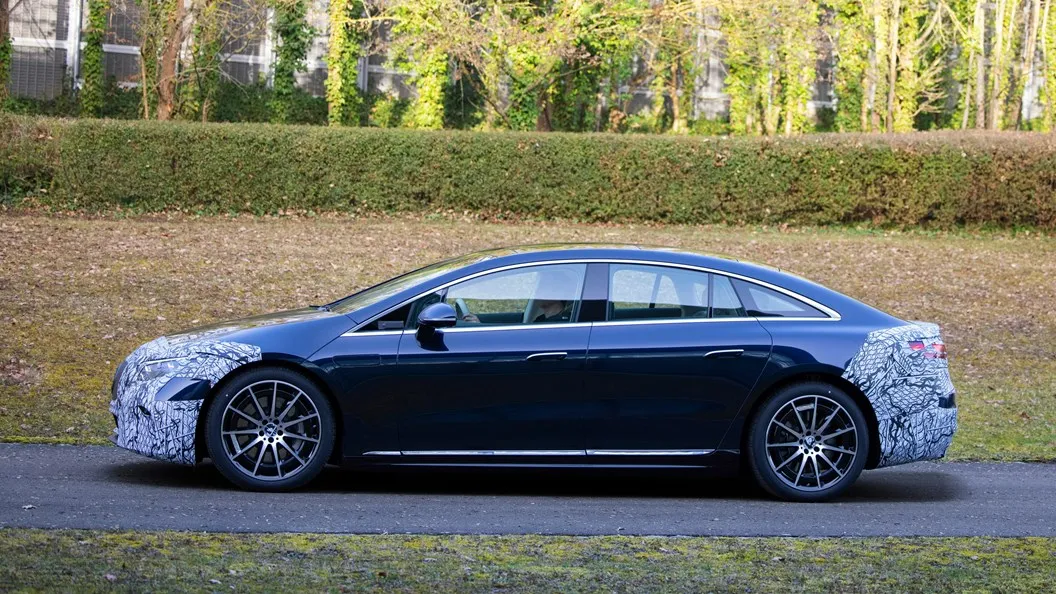
It can be seen that Mercedes-Benz, who has freed themselves from the platform of fuel vehicles, has put a lot of effort into interpreting what “pure electric vehicles” mean.
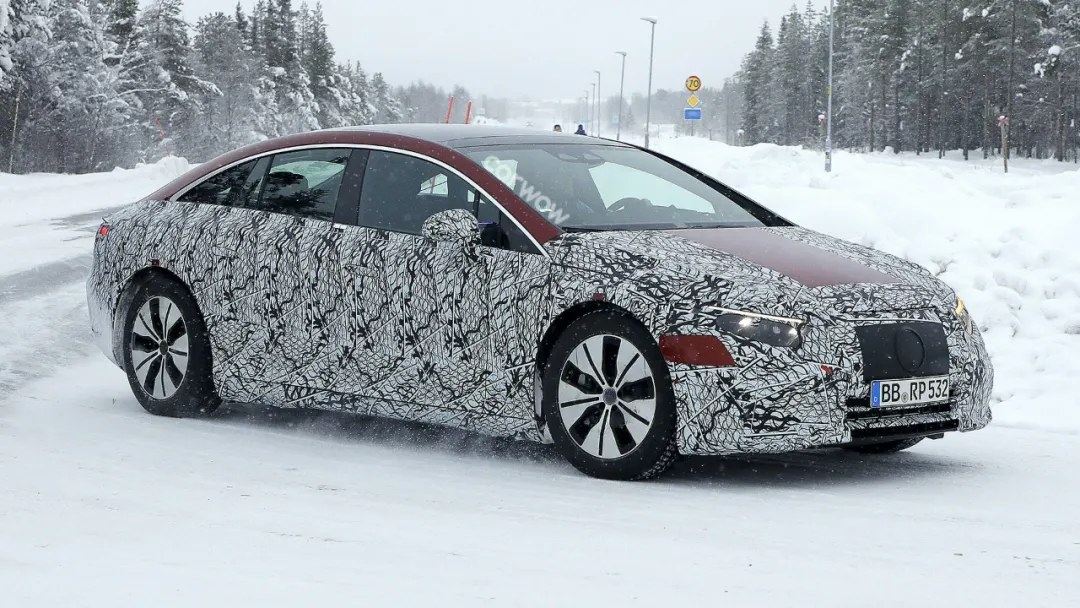
The most significant difference between the EQS and the Mercedes-Benz S-Class is that the front suspension has been greatly shortened, the A-pillar has moved forward, and the tilt angle is much smaller. The side view effect is not like the S-Class, but more like the AMG-level coupe model.
This design leads to an air resistance coefficient as low as 0.2 Cd for the EQS, while the air resistance coefficients for the ET7 and the Tesla Model S Plaid are 0.23 Cd and 0.208 Cd, respectively. This is a typical engineering index that is more sensitive in the pure electric era.
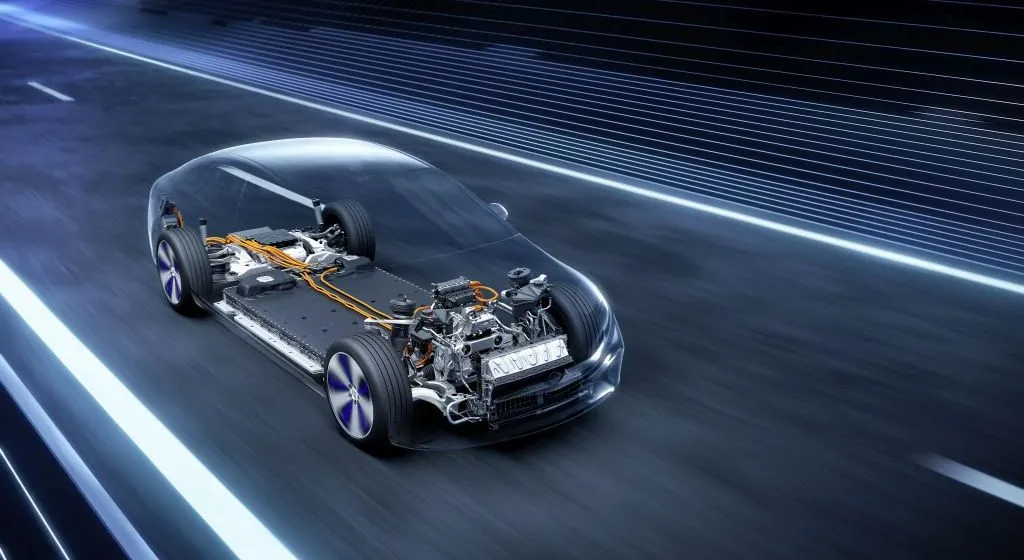
In addition, the EQS will be equipped with a maximum 108 kWh NCM 811 battery pack and the WLTP range will exceed 700 kilometers. However, the maximum semi-solid state battery pack specification for the NIO ET7 is as high as 150 kWh, and the NEDC range under the working condition exceeds 1000 km.
According to Mercedes Blog, the total power of the EQS 550 4Matic is 476 horsepower and 760 Nm, while the total power of the EQS AMG will reach 600 horsepower and 900 Nm, with a speed of less than 4.2 seconds per 100 kilometers.
The power parameters of the NIO ET7 are closer to the latter, with 640+ horsepower, 850 Nm, and a speed of less than 3.9 seconds per 100 kilometers.
At first glance, it seems that there is no significant difference between the two cars.But if you swipe down in the NIO App, you will enter a new page: NAD (NIO Autonomous Driving), which Li Bin called the “ultimate form” of intelligent vehicles.
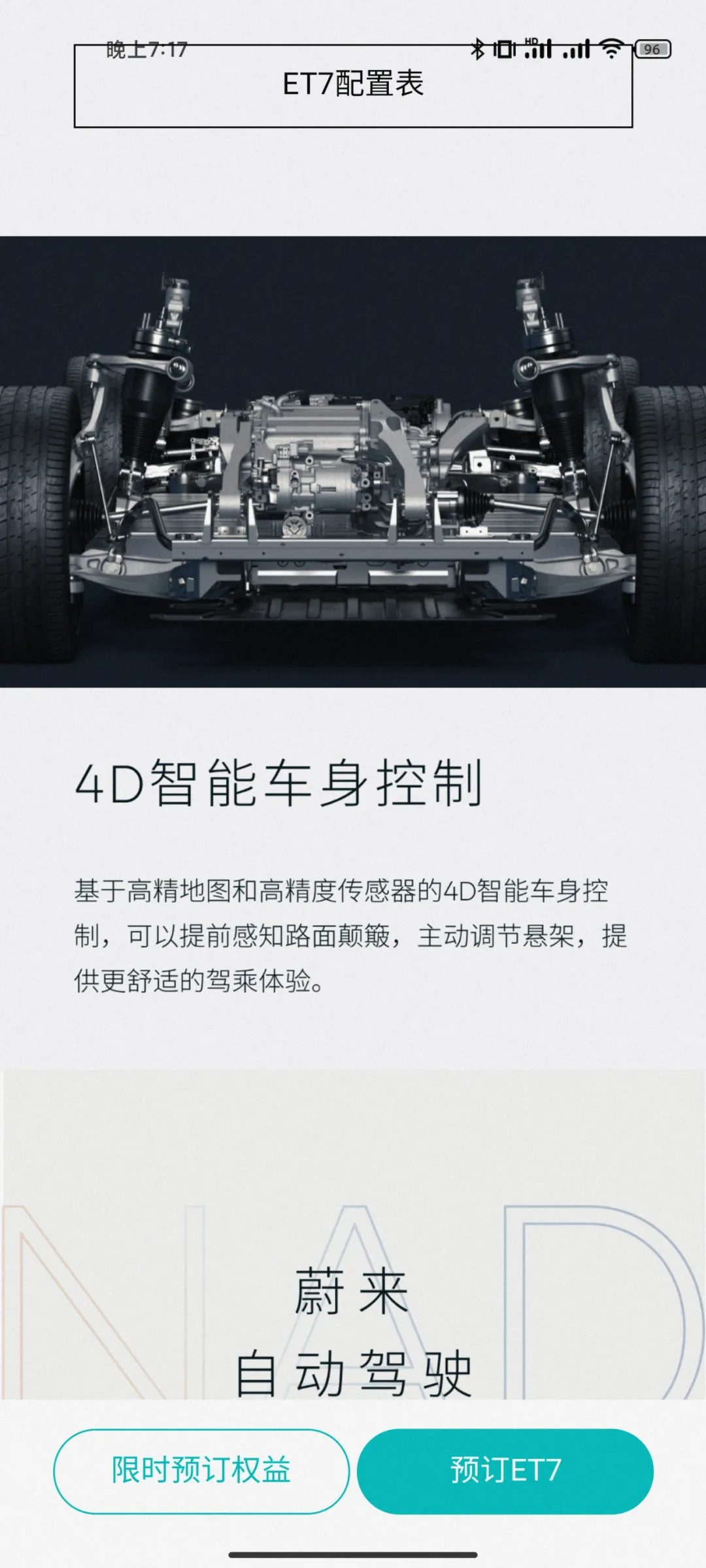
During the EQS warm-up, Mercedes-Benz mentioned the Hyperscreen curved integrated screen, 108 kWh NCM 811 battery, EQS exclusive Torque Shifting torque distribution function, and even the plug-and-charge function of the charging station. However, so far, we have not seen an official introduction to the autonomous driving system.
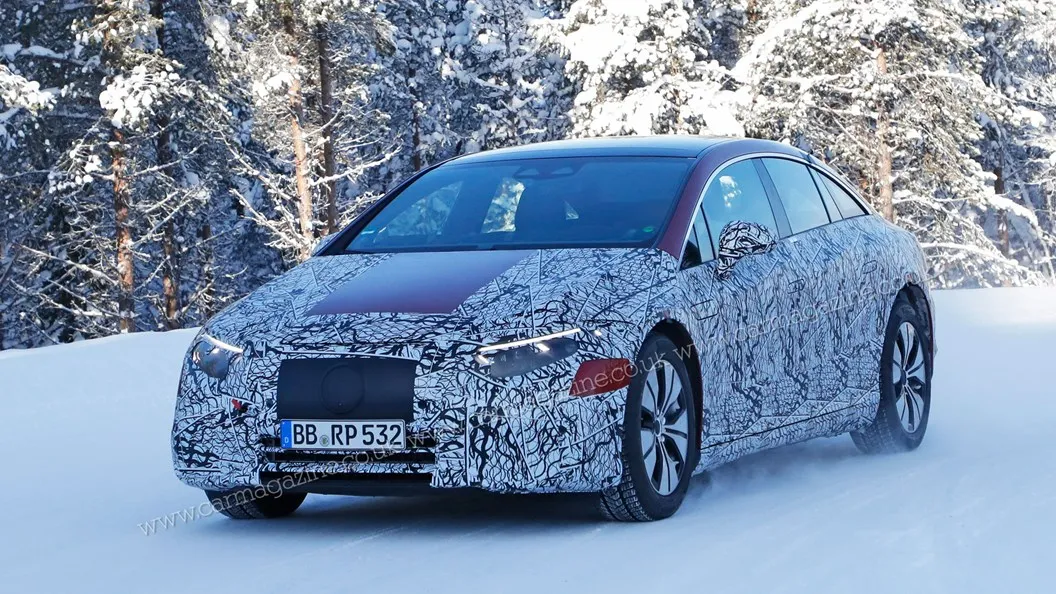
From the spy photos, EQS will be equipped with the front binocular camera of the new S-Class, and this system is also equipped with the second-generation SCALA 16-line laser radar from Valeo. According to the new S-Class, the specific sensor configuration is as follows:
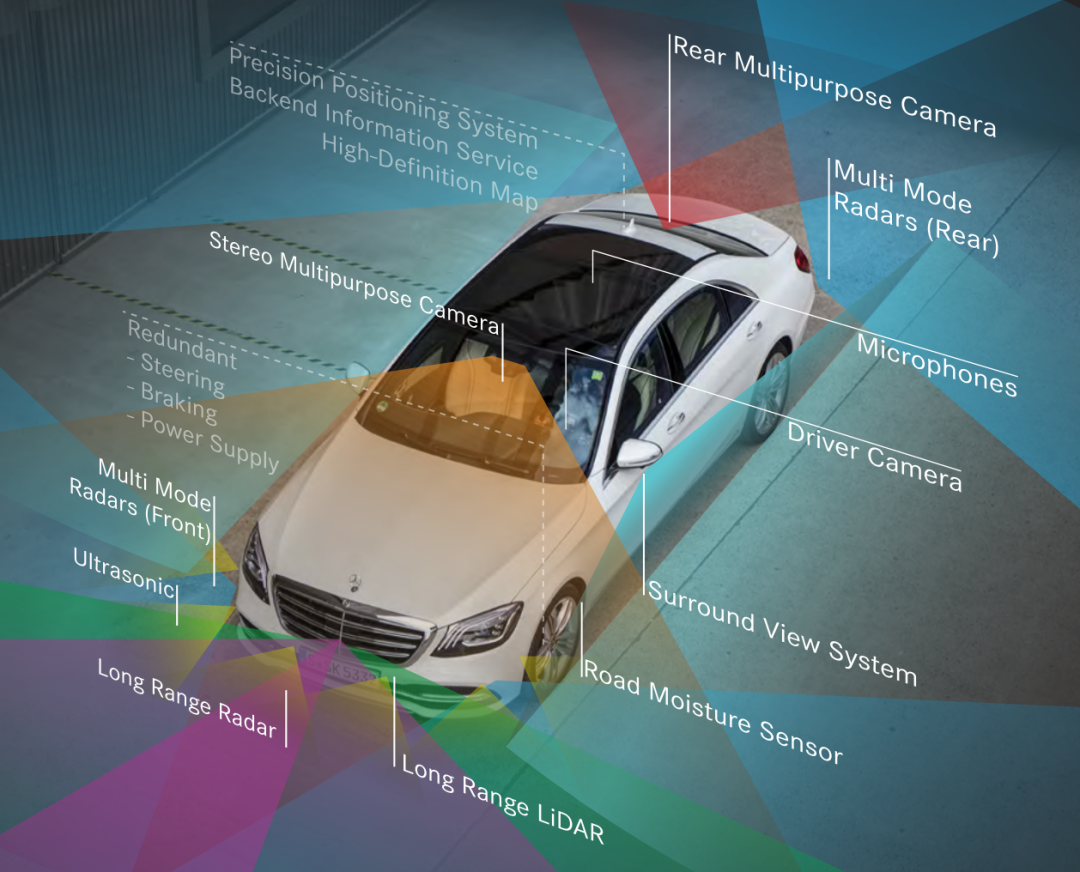
-
Front binocular camera
-
Front 16-line SCALA laser radar
-
5 millimeter-wave radars
-
4 surround-view cameras
-
12 ultrasonic sensors
-
Road humidity sensor
-
High-precision map
-
Redundant design for steering, braking, and power supply
-
Driver attention monitoring camera
This is the latest and most powerful autonomous driving system from Mercedes-Benz. According to the standards of the International Association of Automotive Engineers, this system can achieve level 3 autonomous driving at a maximum speed of 130 km/h on high-speed road sections covered by high-precision maps.
After the vehicle starts the autonomous driving system, the driver no longer needs to pay attention to the road ahead, and only needs to take over the vehicle when extreme situations that the system cannot handle occur. Design-complete and algorithm-exquisite L3, only waiting for German regulatory approval.
But if we turn our heads and look at the NIO NAD, we will find that the differences between the two systems are so great that they cannot be compared. In order to facilitate comparison, let’s simply list the NAD hardware:
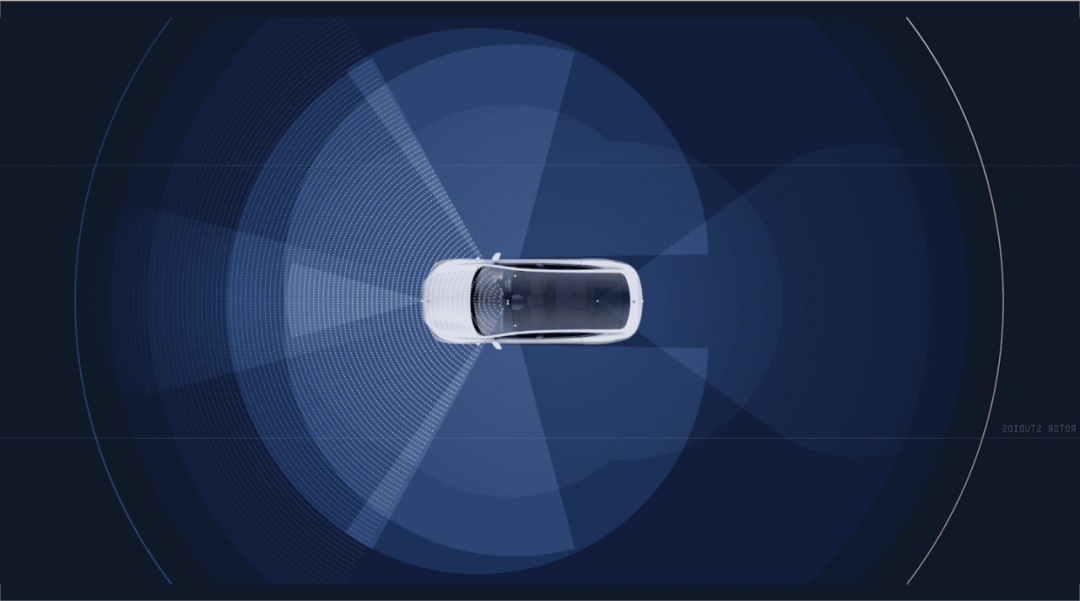
-
Front binocular camera
-
Front equivalent of 300-line solid-state laser radar
-
5 driving assistance cameras
-
4 surround-view cameras- 5 millimeter wave radars
-
12 ultrasonic sensors
-
High precision maps
-
Redundancy in power supply, communication, steering, braking, and power.
-
1016 Tops Orin computing platform
How should we view NAD?
It features dual perception of vision and radar, with 360-degree coverage and targeted reinforcement of forward LiDAR, the most powerful production computing platform, proprietary full-stack algorithms, and full-stack redundant fault-tolerant design.
Li Bin once said when talking about the ET7 that due to the negative pressure and financial pressures of 2019, the production of the ET7 was postponed. But it was precisely because of this delay that NAD was born, which Li Bin praised as “the best decision.”
We can perceive Li Bin’s ambition in the selection of sensors.
For example, to solve the perception problem of autonomous driving cars, NIO has equipped the ET7 with 8 million pixel cameras in 11 locations, giving it a visual detection range of more than 500 meters.
Secondly, in terms of LiDAR, EQS’s 16-beam LiDAR has low density and actual perception performance comparable to imaging LiDAR, while NIO has challenged the equivalent of 300 lines, 120-degree field of view, and detection distance of more than 400 meters of solid-state LiDAR.
To handle massive data at the frontend, NIO has chosen four high-performance versions of Nvidia’s Orin as a computing platform, with computing power reaching an unprecedented 1016 Tops.
It is obvious that Li Bin did not refer to the mainstream top-level autonomous driving systems in the industry when defining NAD, such as Tesla’s FSD, Mercedes-Benz’s Drive Pilot, and XPilot 3.0 from Xpeng. Li Bin tried to build a system that can support ET7 throughout its life cycle and compete with other top autonomous driving systems.
In fact, from the speeches of the two CEOs in the past, we can predict the huge gap between EQS and ET7 in autonomous driving in advance.
As early as the 2019 Daimler Investor Conference, Ola Kallenius publicly expressed low expectations for autonomous driving technology: “Comprehensive deployment associates the uncertainty of a large amount of capital and profit potential. Daimler will conduct a realistic review of autonomous driving business and has no intention of competing for first place.”Li Bin’s attitude is vastly different. In his view, “from today to 2025, it is time for smart cars to seek ultimate products. In this process, various technologies will gradually converge and the implementation of autonomous driving will transform the appearance, interior layout, and shape of digital cockpit of vehicles.”
Here, let’s take a look again. The slogan developed by Mercedes for EQS is “Time for a new era,” while NIO’s slogan for ET7 is “Ready for tomorrow.”
These two sentences are highly condensed summaries. To translate them in my meager English ability, EQS’s slogan is: “It’s time to step into a new era,” and ET7 is more like: “Born for the next era.”
As far as the global technology route in the autonomous driving field is concerned, the only consensus is that there is no consensus. When six-year-old NIO advanced into the autonomous driving full-stack self-research technology no-man’s land, Daimler, the world’s largest luxury brand, loosened the throttle due to a trend of uncertain profitability. Some may be surprised that obvious technological differences can coexist in the same industry.
In fact, “let a hundred flowers bloom” is precisely the typical characteristic of an industry in its early and vigorous development stage. If there were no such booming coexistence of multiple technologies in autonomous driving today, how could various technologies converge slowly as talked by Li Bin?
It’s nothing more than NIO losing interest in continuing to hesitate, and the leader in the industry taking this step ahead of time. So will NAD stand at the forefront of China’s autonomous driving?
This article is a translation by ChatGPT of a Chinese report from 42HOW. If you have any questions about it, please email bd@42how.com.
